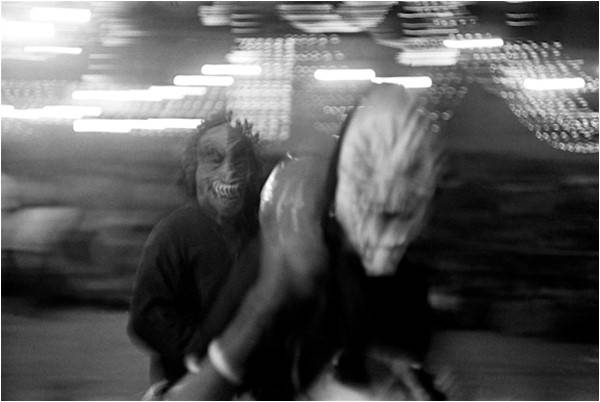
The name of modest and gentlemanly photographer Arif Mahmood, born in 1960, is something of a household word in this country - and no doubt in several other countries too. I mention other countries because his work has been exhibited widely in newspapers and magazines in Pakistan, as well as in international publications such as the Khaleej Times, Newsweek, Gulf News, Arabian Women and Private Magazine. Indeed, it is not uncommon in local newspapers and magazines - perhaps abroad also - to see a two-page spread of his work. Meanwhile, the exhibition now under review was held in Karachi’s Chawkandi Gallery, one of the oldest - if not the oldest - in the city.
His group shows include ‘Where 3 Dreams Cross: 150 years of photography in India, Pakistan and Bangladesh’ at the White Chapel Gallery in London; a show at the Fotomuseum, Winterthur, Zurich; and ‘Hanging Fire’ at the Asia Society Museum in New York. Two of his pieces are in the Fine Arts Houston Museum’s permanent collection. What is more, he is currently chief of White Star Photo (Pvt.) Ltd, Karachi, whose name was suggested by Hameed Haroon, a big name in the management of Dawn.
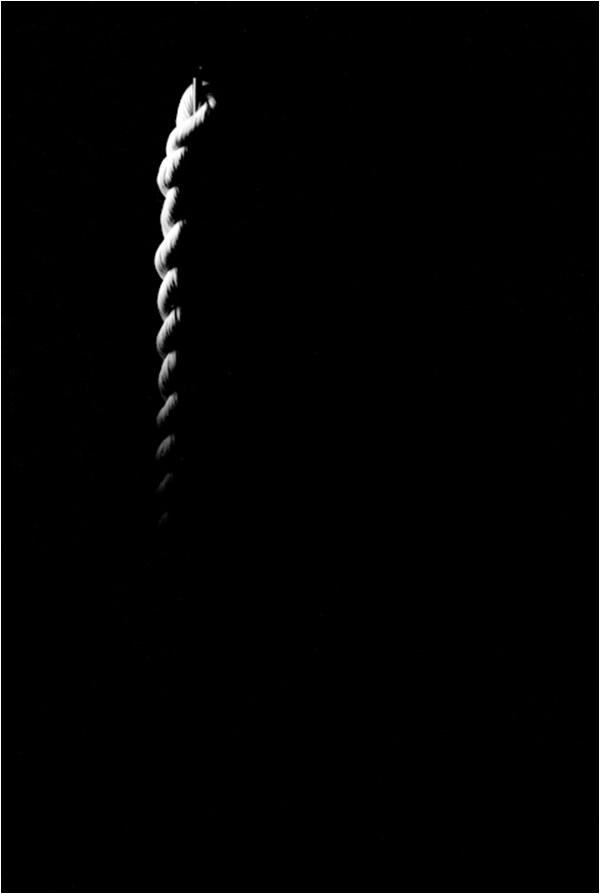
Arif has been a keen photographer since 1985. When asked what attracted him to it, he answered, “The sound of the shutter.” And his first camera was a Minolta X-700, which was billed as the best camera produced that year. Again, it was partly the shutter sound that attracted him. Even now, he prefers to use the SLR camera rather than the digital, though the latter is supposed to give ‘pristine ‘ clarity and so on. With the digital camera, so much is done for you, whereas with the SLR, so much more is up to you. Thus it is more of a test of the photographer’s ability. Personally, I believe one can do better creative photography with an SLR than with a digital camera.
As is well known, light is a most important element in photography, and it is this artist’s use of light that is one of the distinguishing features of his work. He presents many dark, dimly lit scenes, and in some cases it is difficult to imagine what the subject is, while in others it is hard to ascertain what the source of the light is. In one such image, most of the frame is black, with a few lighter details, with a brilliant frontal light allowing a glimpse of buildings and the outline of a large group of people. This is quite baffling without the maestro’s explanation. Accordingly, he explains that the light is nothing sinister - merely a huge bulb on the side of one of the buildings, lighting up an outdoor function. Sometimes, on the other hand, the effect of his work is blurry, and many photos are taken through cracks and narrow spaces. In other photos again, the stark contrast between black and white is amazing, yet we cannot say such works are ‘too contrasty’, as the saying goes, even in the case here mentioned.
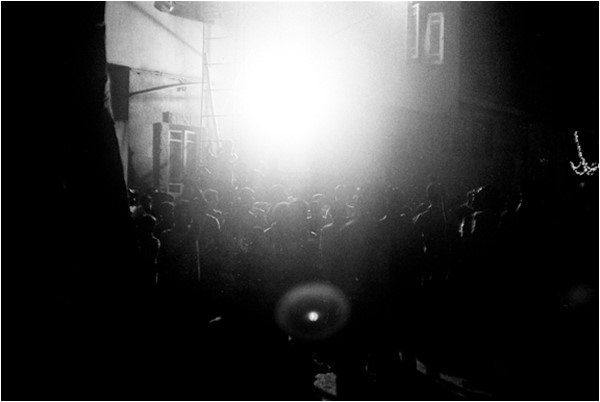
Much of his work is street photography, with groups of glum young men against a shabby building, for example, or a game of street cricket reflected in a nullah or puddle in the foreground, with a touch of overexposure from above in the background somehow enhancing the depth of field. Actually he has spent years picturing street life, thereby exhibiting the resilience of Karachi despite the impermanence of life. He really enjoys what he calls ‘people photography,’ and says that once you’re hooked, you never get tired of it. When asked which photographer has influenced him, he replies that many had done so, especially the Czechoslovakian Joseph Koudelka. Koudelka began by photographing gypsies in his home country, but it was his pictures of the seven days of the Soviet-led Warsaw Pact forces’ invasion of Prague in 1968 that first made him famous. Like him, Arif works in black and white, producing many high-contrast images. After leaving his country, Koudelka began his long love affair with street photography and for this he recommends the use of wide-angle lenses - 35mm.and 50mm. “At the end of the day,” he says, “we need to be critical of ourselves, and the best help you can give yourself in street photography is to use a wide-angle lens.”
Arif is also very aware of the work of Cartier-Bresson, one of the most original, accomplished, best-loved and influential photographers, and probably author of the statement, “The true master of black and white photography must have a strong sense of composition, geometry and emotional impact, must show both the hope and the melancholy of life.” And certainly these qualities are found in Arif’s work, though the mention of geometry is somehow uncomfortably technical. “As a photographer,” he says, “searching for gifts which I call ‘moments of grace’ is what I live for, mostly.”
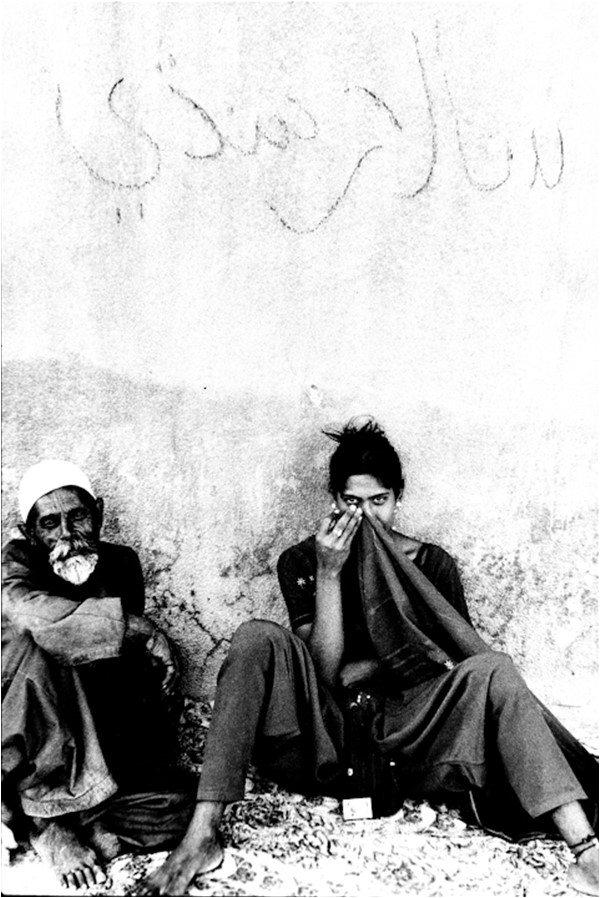
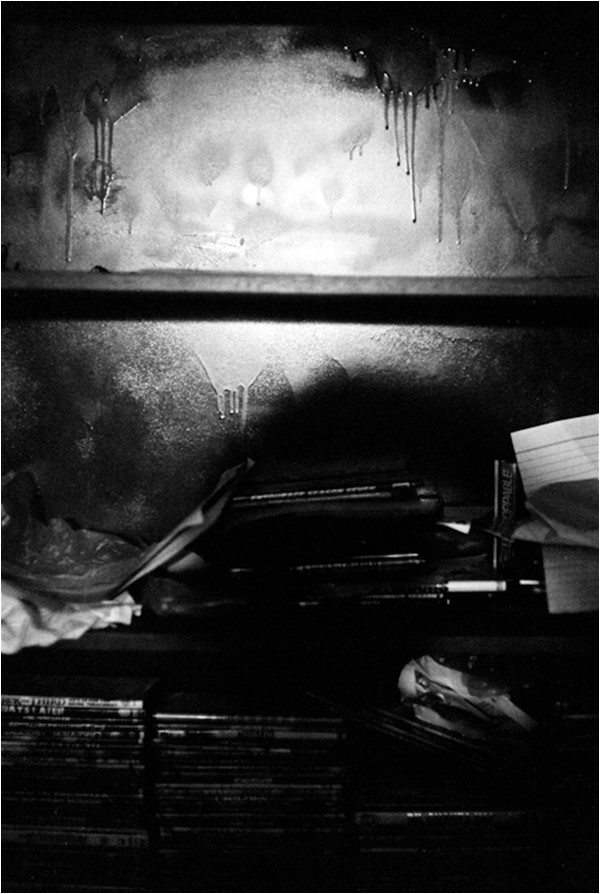
It is his photograph of a piece of rope against a totally black background that has the most impact, and this quality in the piece owes much of its presence to the partial lighting of the subject. Perhaps we could call it Rembrandt lighting. And somehow the large area of deep black cannot be termed negative space - maybe due to the eloquence of the picture, the courage of the photographer in employing it and the various thoughts it provokes in giving such dramatic status to the subject, its place in history and so on. In fact, the use of rope dates back to prehistoric times. And then, of course, there is the fairy tale about Rapunzel, who plaited her long, golden hair into a rope and let it fall to ground level to enable the wicked witch - later also the handsome prince - to climb up into her tower, from which he fell into blackness when discovered by the witch.
However, as to the theme of ‘Silent Rage,’ there are more sinister connotations that spring to mind, from both earlier and recent history - such as the public hanging of commoners in Elizabethan England. Beheading was reserved for royalty and the nobility, who were expected to pay and to forgive their executioners. But in the present age it was the public hanging of Saddam Hussein that drew such widespread anger from around the world, as well as the auctioning of the rope that bore him away.
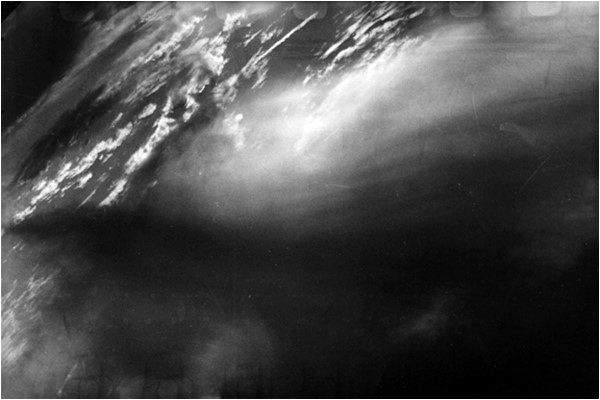
Many of Arif’s photographs in this exhibition apparently bear no relation to anger - silent or otherwise - but he explains that the anger may have occurred long before the people or events depicted came into being, while the title of the book was decided in 2013. The silence is in his observation, he explains, and adds that the rage is what he sees, and that it echoes through various connotations. He carries a healthy anger within himself. But a clear connection with anger is present in the street scene where a young man in white - colour of purity - lies either lifeless or in great pain, probably due to his fall, blood from the wound (mercifully portrayed in black) surrounding his head and luxuriant hair, while a lady’s hand reaches out to comfort him. The white apparel of some of the bystanders contrasts with the darkness of the road, while the firmness of their stance expresses horror, at least, if not sympathy as well. Such scenes are all too common, and nowadays appear on a much larger scale in certain parts of the country.
On a happier note, one is fascinated by what could be interpreted as a satellite image of what appears to be a planet, though perhaps not of terra firma. The roundness and apparent revolving motion of the subject, plus the variation in shades of grey, the blurry touch of white, fading out gradually through grey to black, pay tribute to the imagination and talent of the photographer. Actually, this is a photograph of the skyline, taken from the patio of his house, with the camera tilted. “The sky signifies your fate,” he says, “and the pictures on the previous and the following pages show people trapped by their fate.”
Similarly, his photograph of two lions resting in their cage at the Karachi Zoo symbolises the caged life that involves so many people.
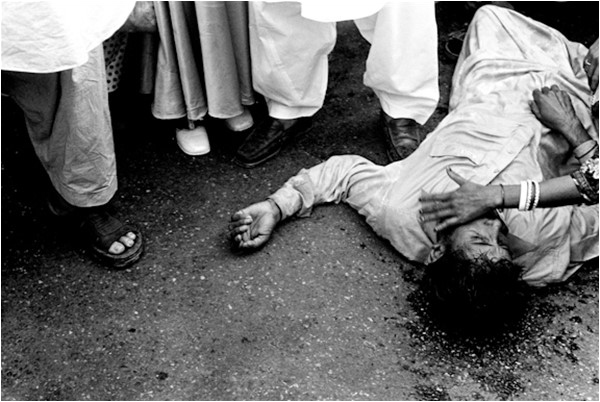
An example of Arif’s interest in ‘people photography’ is his picture of two individuals (the younger being transgender) sitting against the wall of Hajji Abdullah Haroon Gymkhana, where he used to park his car on his way to office. It is an interesting study, full of varied texture and with a Sindhi statement on the wall above the subjects. The artist explained that the statement’s presence was purely circumstantial (so much for my earnest but naive efforts in finding out its meaning), and that after all, most street photography isn’t planned.
It took two weeks of chatting them up to get their permission for a photograph, and then soon afterwards, they disappeared. But such is the nature of street photography - here today and gone tomorrow!
Then there is a completely baffling picture, showing a blurred image of two figures, one with outsize teeth and a weird hairdo, while the other also has no claim to beauty. And where was it taken? Some features of the background suggest either a street or a parking building with many lights, also distorted. One wonders how he achieved these effects.
He explains: “Well, to tell the truth, both figures are wearing masks. And the photograph was taken during the nine-day Hindu festival of Naverati, at the Swami Narai Mandir in M.A. Jinnah Road, Karachi.”
It’s amazing what an accomplished photographer can produce!
When asked, “In your work, which one would you call the picture of your lifetime?” he replies, “Nobody has answered that question.” And with so many amazing shots to his credit, this is hardly surprising. One can only look forward to his future achievements at home and abroad.
His group shows include ‘Where 3 Dreams Cross: 150 years of photography in India, Pakistan and Bangladesh’ at the White Chapel Gallery in London; a show at the Fotomuseum, Winterthur, Zurich; and ‘Hanging Fire’ at the Asia Society Museum in New York. Two of his pieces are in the Fine Arts Houston Museum’s permanent collection. What is more, he is currently chief of White Star Photo (Pvt.) Ltd, Karachi, whose name was suggested by Hameed Haroon, a big name in the management of Dawn.

Much of his work is street photography - groups of glum young men against a shabby building, for example
Arif has been a keen photographer since 1985. When asked what attracted him to it, he answered, “The sound of the shutter.” And his first camera was a Minolta X-700, which was billed as the best camera produced that year. Again, it was partly the shutter sound that attracted him. Even now, he prefers to use the SLR camera rather than the digital, though the latter is supposed to give ‘pristine ‘ clarity and so on. With the digital camera, so much is done for you, whereas with the SLR, so much more is up to you. Thus it is more of a test of the photographer’s ability. Personally, I believe one can do better creative photography with an SLR than with a digital camera.
As is well known, light is a most important element in photography, and it is this artist’s use of light that is one of the distinguishing features of his work. He presents many dark, dimly lit scenes, and in some cases it is difficult to imagine what the subject is, while in others it is hard to ascertain what the source of the light is. In one such image, most of the frame is black, with a few lighter details, with a brilliant frontal light allowing a glimpse of buildings and the outline of a large group of people. This is quite baffling without the maestro’s explanation. Accordingly, he explains that the light is nothing sinister - merely a huge bulb on the side of one of the buildings, lighting up an outdoor function. Sometimes, on the other hand, the effect of his work is blurry, and many photos are taken through cracks and narrow spaces. In other photos again, the stark contrast between black and white is amazing, yet we cannot say such works are ‘too contrasty’, as the saying goes, even in the case here mentioned.

Much of his work is street photography, with groups of glum young men against a shabby building, for example, or a game of street cricket reflected in a nullah or puddle in the foreground, with a touch of overexposure from above in the background somehow enhancing the depth of field. Actually he has spent years picturing street life, thereby exhibiting the resilience of Karachi despite the impermanence of life. He really enjoys what he calls ‘people photography,’ and says that once you’re hooked, you never get tired of it. When asked which photographer has influenced him, he replies that many had done so, especially the Czechoslovakian Joseph Koudelka. Koudelka began by photographing gypsies in his home country, but it was his pictures of the seven days of the Soviet-led Warsaw Pact forces’ invasion of Prague in 1968 that first made him famous. Like him, Arif works in black and white, producing many high-contrast images. After leaving his country, Koudelka began his long love affair with street photography and for this he recommends the use of wide-angle lenses - 35mm.and 50mm. “At the end of the day,” he says, “we need to be critical of ourselves, and the best help you can give yourself in street photography is to use a wide-angle lens.”
Arif is also very aware of the work of Cartier-Bresson, one of the most original, accomplished, best-loved and influential photographers, and probably author of the statement, “The true master of black and white photography must have a strong sense of composition, geometry and emotional impact, must show both the hope and the melancholy of life.” And certainly these qualities are found in Arif’s work, though the mention of geometry is somehow uncomfortably technical. “As a photographer,” he says, “searching for gifts which I call ‘moments of grace’ is what I live for, mostly.”


"As a photographer," he says, "searching for gifts which I call 'moments of grace' is what I live for, mostly"
It is his photograph of a piece of rope against a totally black background that has the most impact, and this quality in the piece owes much of its presence to the partial lighting of the subject. Perhaps we could call it Rembrandt lighting. And somehow the large area of deep black cannot be termed negative space - maybe due to the eloquence of the picture, the courage of the photographer in employing it and the various thoughts it provokes in giving such dramatic status to the subject, its place in history and so on. In fact, the use of rope dates back to prehistoric times. And then, of course, there is the fairy tale about Rapunzel, who plaited her long, golden hair into a rope and let it fall to ground level to enable the wicked witch - later also the handsome prince - to climb up into her tower, from which he fell into blackness when discovered by the witch.
However, as to the theme of ‘Silent Rage,’ there are more sinister connotations that spring to mind, from both earlier and recent history - such as the public hanging of commoners in Elizabethan England. Beheading was reserved for royalty and the nobility, who were expected to pay and to forgive their executioners. But in the present age it was the public hanging of Saddam Hussein that drew such widespread anger from around the world, as well as the auctioning of the rope that bore him away.

Many of Arif’s photographs in this exhibition apparently bear no relation to anger - silent or otherwise - but he explains that the anger may have occurred long before the people or events depicted came into being, while the title of the book was decided in 2013. The silence is in his observation, he explains, and adds that the rage is what he sees, and that it echoes through various connotations. He carries a healthy anger within himself. But a clear connection with anger is present in the street scene where a young man in white - colour of purity - lies either lifeless or in great pain, probably due to his fall, blood from the wound (mercifully portrayed in black) surrounding his head and luxuriant hair, while a lady’s hand reaches out to comfort him. The white apparel of some of the bystanders contrasts with the darkness of the road, while the firmness of their stance expresses horror, at least, if not sympathy as well. Such scenes are all too common, and nowadays appear on a much larger scale in certain parts of the country.
On a happier note, one is fascinated by what could be interpreted as a satellite image of what appears to be a planet, though perhaps not of terra firma. The roundness and apparent revolving motion of the subject, plus the variation in shades of grey, the blurry touch of white, fading out gradually through grey to black, pay tribute to the imagination and talent of the photographer. Actually, this is a photograph of the skyline, taken from the patio of his house, with the camera tilted. “The sky signifies your fate,” he says, “and the pictures on the previous and the following pages show people trapped by their fate.”
Similarly, his photograph of two lions resting in their cage at the Karachi Zoo symbolises the caged life that involves so many people.

An example of Arif’s interest in ‘people photography’ is his picture of two individuals (the younger being transgender) sitting against the wall of Hajji Abdullah Haroon Gymkhana, where he used to park his car on his way to office. It is an interesting study, full of varied texture and with a Sindhi statement on the wall above the subjects. The artist explained that the statement’s presence was purely circumstantial (so much for my earnest but naive efforts in finding out its meaning), and that after all, most street photography isn’t planned.
It took two weeks of chatting them up to get their permission for a photograph, and then soon afterwards, they disappeared. But such is the nature of street photography - here today and gone tomorrow!
Then there is a completely baffling picture, showing a blurred image of two figures, one with outsize teeth and a weird hairdo, while the other also has no claim to beauty. And where was it taken? Some features of the background suggest either a street or a parking building with many lights, also distorted. One wonders how he achieved these effects.
He explains: “Well, to tell the truth, both figures are wearing masks. And the photograph was taken during the nine-day Hindu festival of Naverati, at the Swami Narai Mandir in M.A. Jinnah Road, Karachi.”
It’s amazing what an accomplished photographer can produce!
When asked, “In your work, which one would you call the picture of your lifetime?” he replies, “Nobody has answered that question.” And with so many amazing shots to his credit, this is hardly surprising. One can only look forward to his future achievements at home and abroad.

